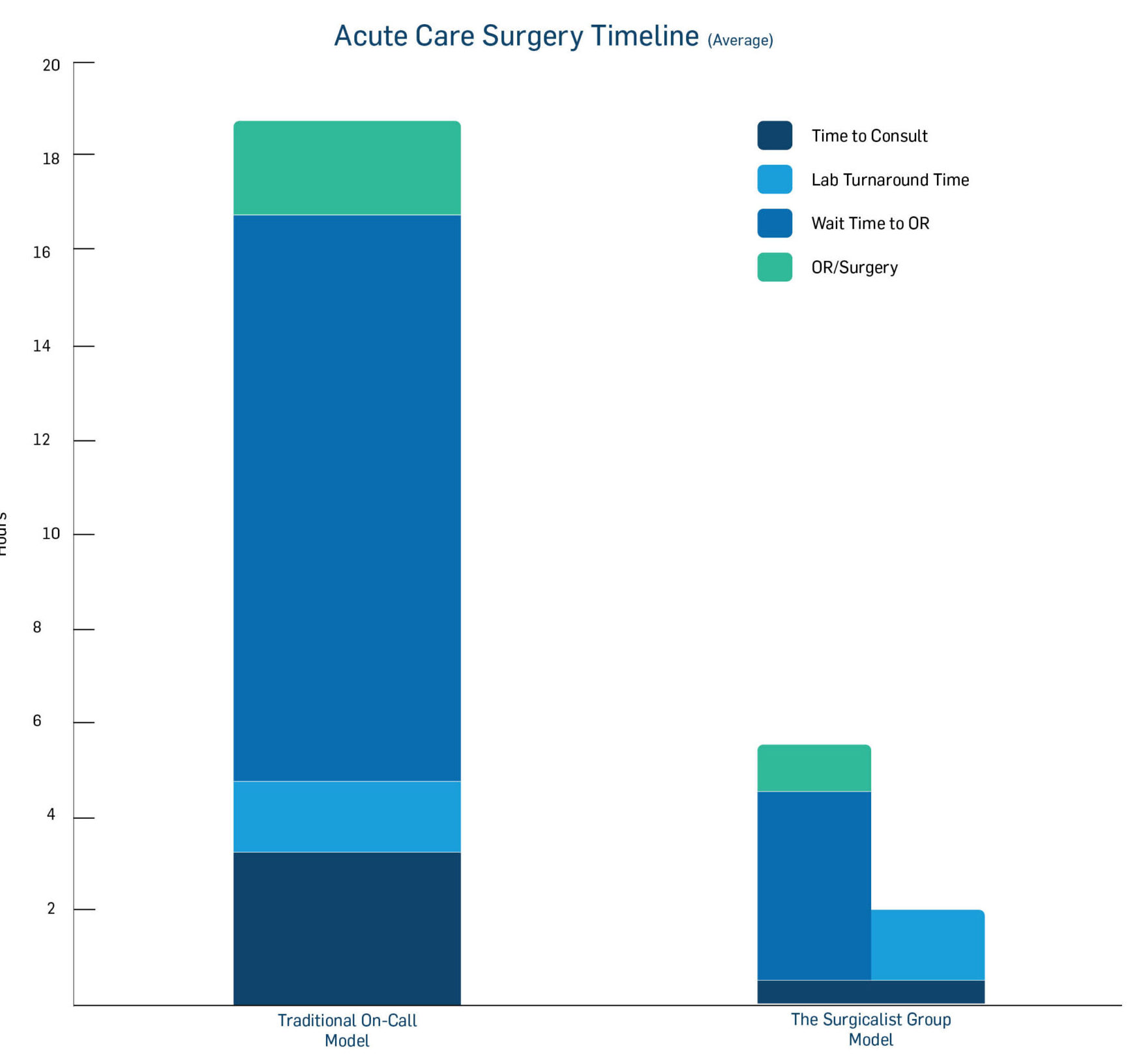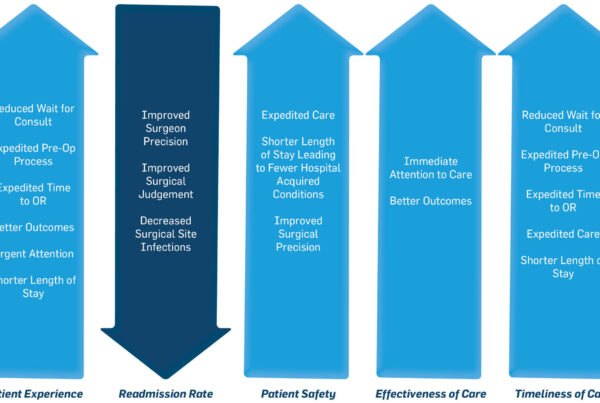Hospital financial leaders are taking action to prevent financial crisis by cutting costs, optimizing reimbursements, and modifying clinical models to drive volume. The surgicalist model, in particular, aims to touch each of these points to effectively help CFOs get closer to obtaining their budgeted goals.
Both the emergency department and the operating room operate at high costs where minutes quickly add up to hundreds, if not thousands, of dollars. By implementing the surgicalist model, hospitals cut costs by dramatically decreasing the amount of time it takes for patients to flow from ED to surgeon consult to diagnostics to the operating room. Eliminating the time it takes for an on-call elective surgeon to reach a patient’s bedside for a consult, combined with additional delays to order labs and schedule OR time, drops cost in personnel and OR vacancies. Surgicalists are readily available for consults in the ED 24/7, expediting ED-to-OR throughput, utilizing gaps in OR scheduling, and preventing leakage to competing EDs by opening ED bed availability.
Additional costs are saved once in the OR, too. As Surgicalists increase the volume of their cases, they become more efficient in the OR, refining their techniques and decreasing the length of time to perform their procedures. With the average cost of running an OR at $62 per minute, every minute matters. Supply utilization also decreases as physician preferences are realized, minimizing unnecessary waste.
In an independent study performed by The Surgicalist Group, Surgicalists also have proven to reduce length of stay, another cost saving benefit for financial leaders to consider. In expediently moving patients from the ED to the OR, the likelihood of their condition worsening is low. Paired with the Surgicalists’ sharp proficiency in the OR, surgical outcomes improve allowing for faster recovery, earlier discharge, and lower readmission rates.
Reducing costs is just one part of the equation when it comes to boosting net revenue. Another area that should not be overlooked by hospital financial leaders to regain lost revenue: reimbursements. Maximizing reimbursements starts with improved documentation of DRG codes. Missed or inaccurately noted DRG codes cost hospitals millions of dollars every year. Detailed documentation is a fundamental skill instilled in each Surgicalist at The Surgicalist Group, ensuring that each case is accurately recorded, increasing the case mix index and maximizing the hospital’s potential for reimbursement.
In optimizing the care for emergent and urgent surgical patients through a surgicalist model, hospital financial leaders can count on decreased costs in the emergency department and operating room and increased revenue through additional reimbursements. Surgical volumes also increase as the Surgicalists remain focused on the acute care surgeries while elective surgeons remain focused on rebuilding their elective cases.
Download Surgicalist Cost Savings





